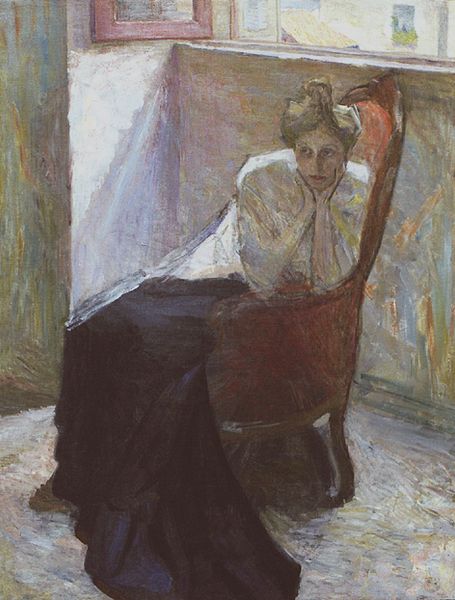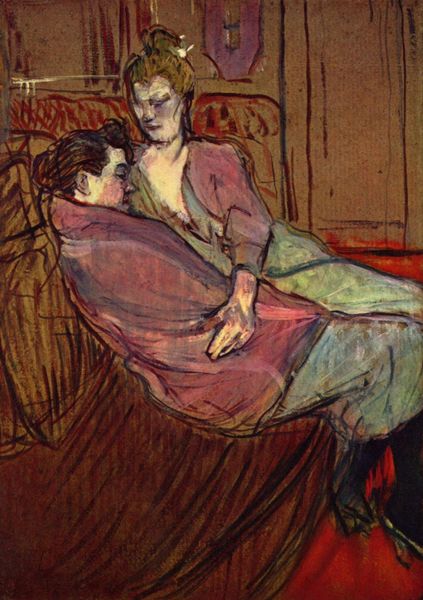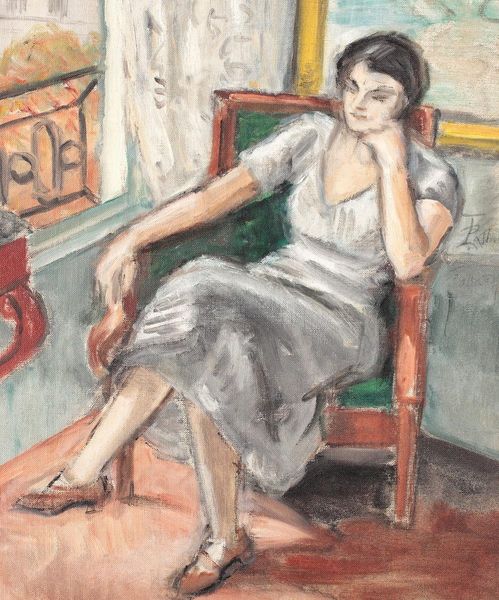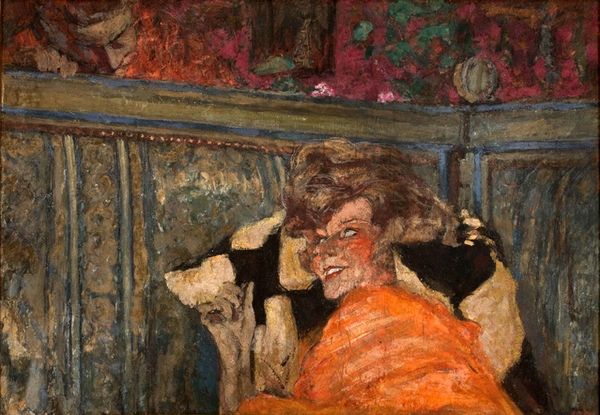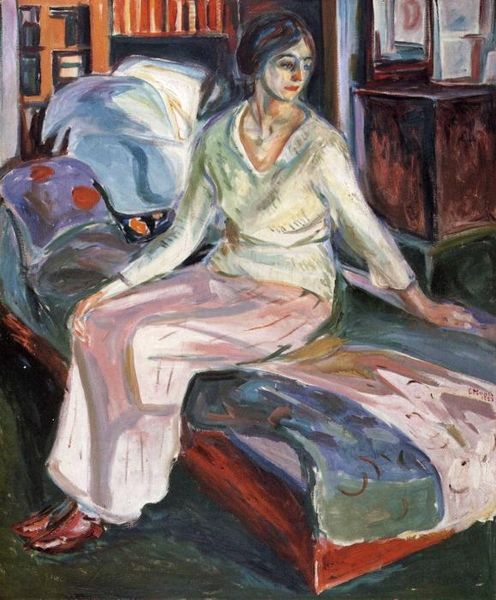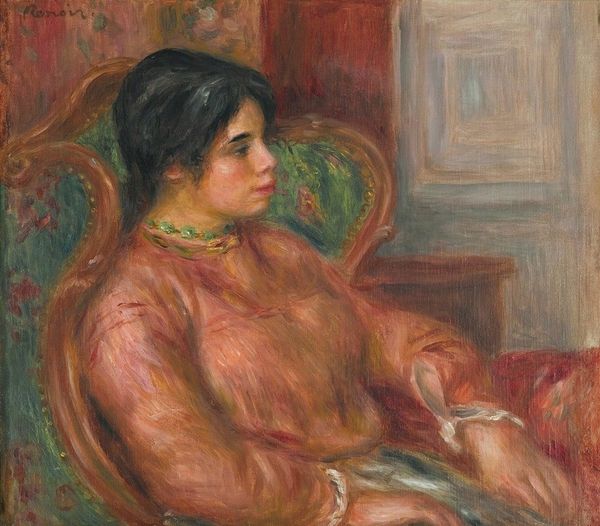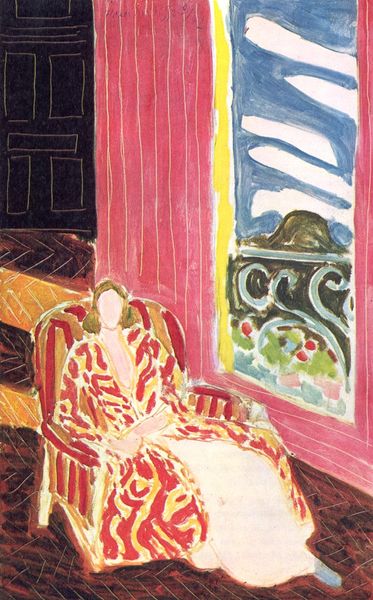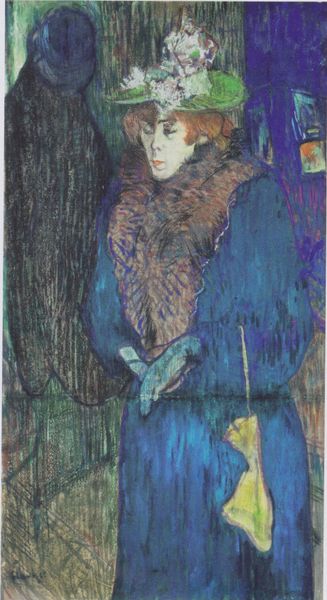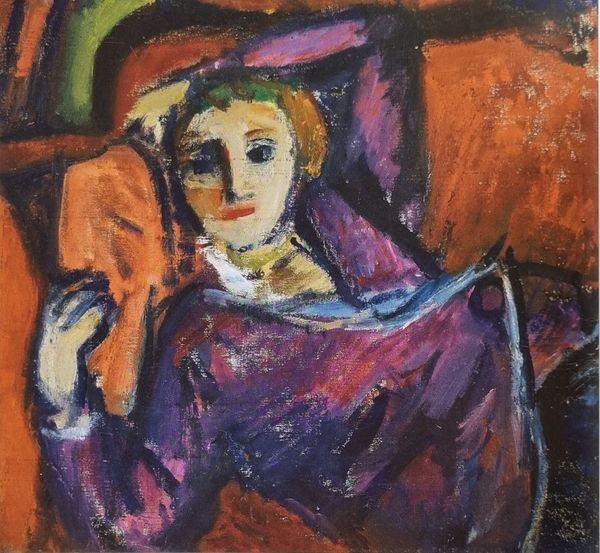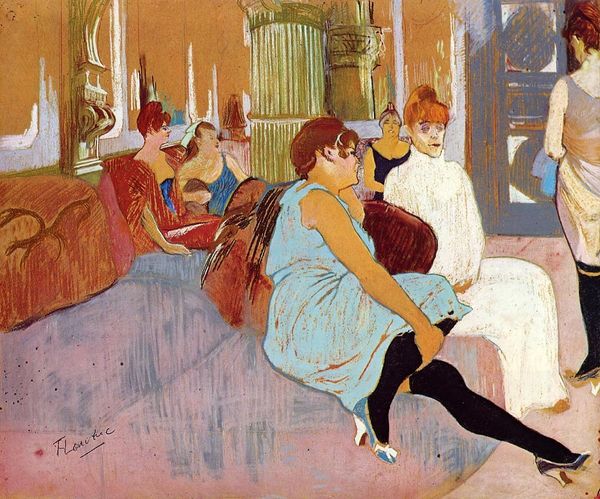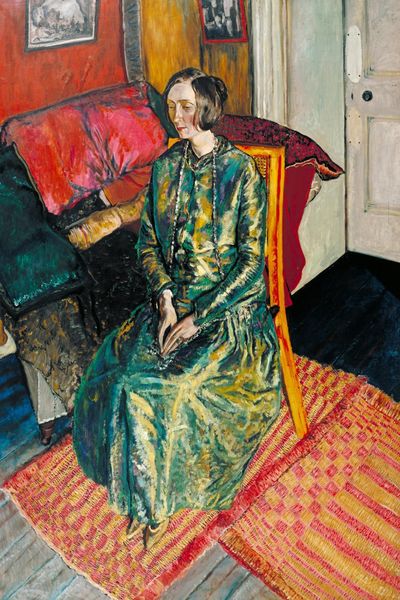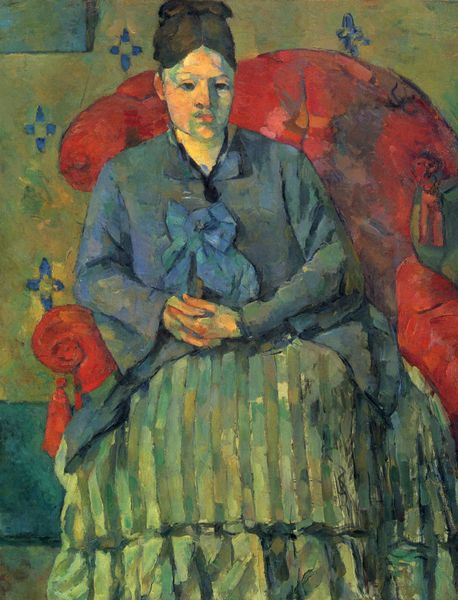
The Divan 1893
0:00
0:00
henridetoulouselautrec
Museu de Arte Assis Chateaubriand (MAC), Campina Grande, Brazil
Copyright: Public domain
Henri de Toulouse-Lautrec made "The Divan" using oil on cardboard. The painting’s dominant feature is its composition, a horizontal arrangement that uses color to draw the eye. The central figure, dressed in a vibrant orange-red, immediately captures our attention and the use of color creates an interesting tension between the foreground and background figures. Lautrec masterfully employs line and color to define forms and create a sense of depth. He uses a structuralist lens that helps to decode the painting's underlying framework. The painting challenges traditional notions of beauty and representation, reflecting broader cultural shifts. The painting’s flattening of space and simplification of forms, characteristic of Lautrec’s style, contribute to its modernity. This challenges fixed meanings. The use of cardboard as a support is quite telling. It's not just a practical choice but also a statement about the transient nature of modern life. The painting's formal elements—color, line, and composition—function aesthetically and as part of a larger cultural dialogue. The artwork remains open to ongoing interpretation.
Comments
No comments
Be the first to comment and join the conversation on the ultimate creative platform.
